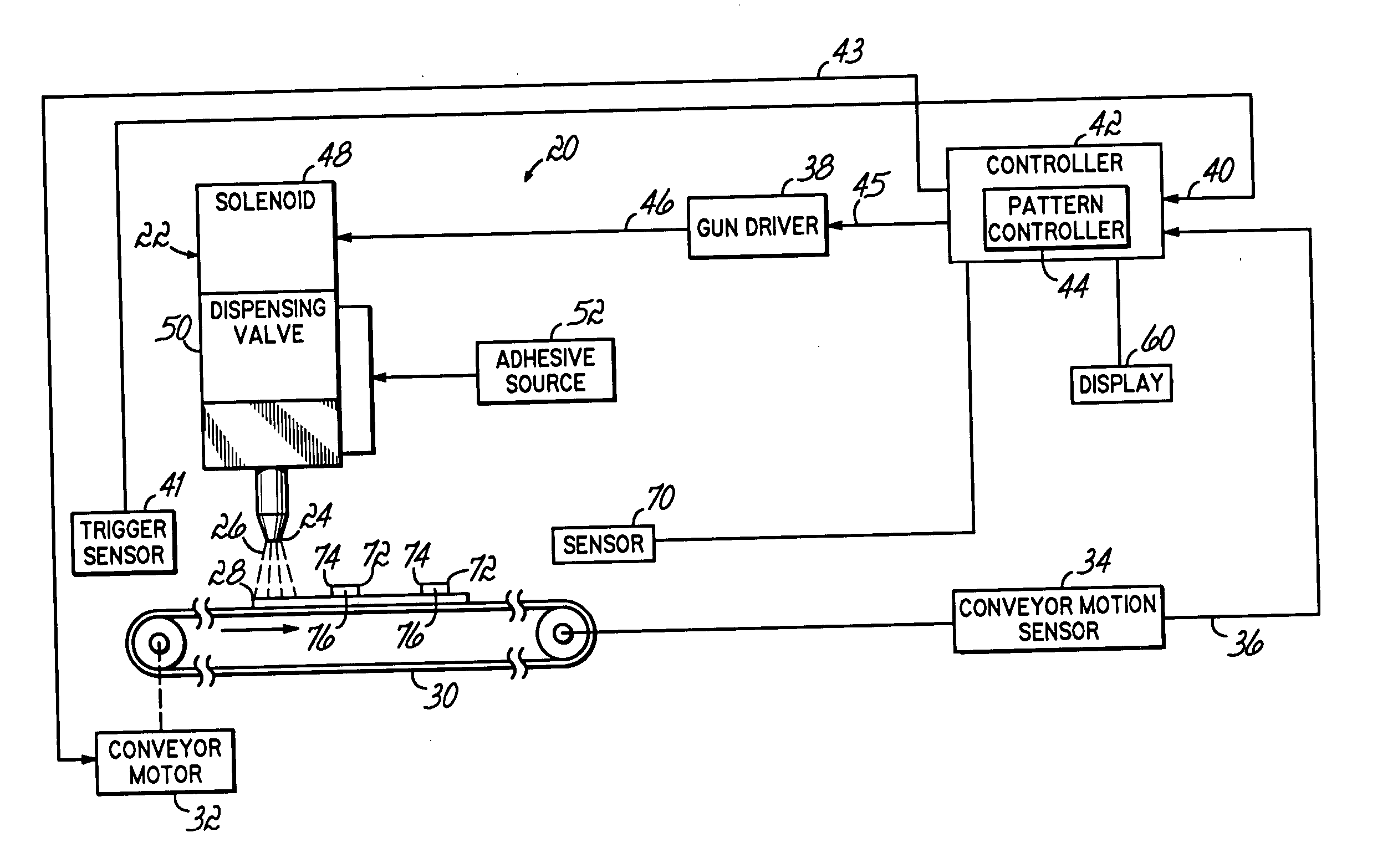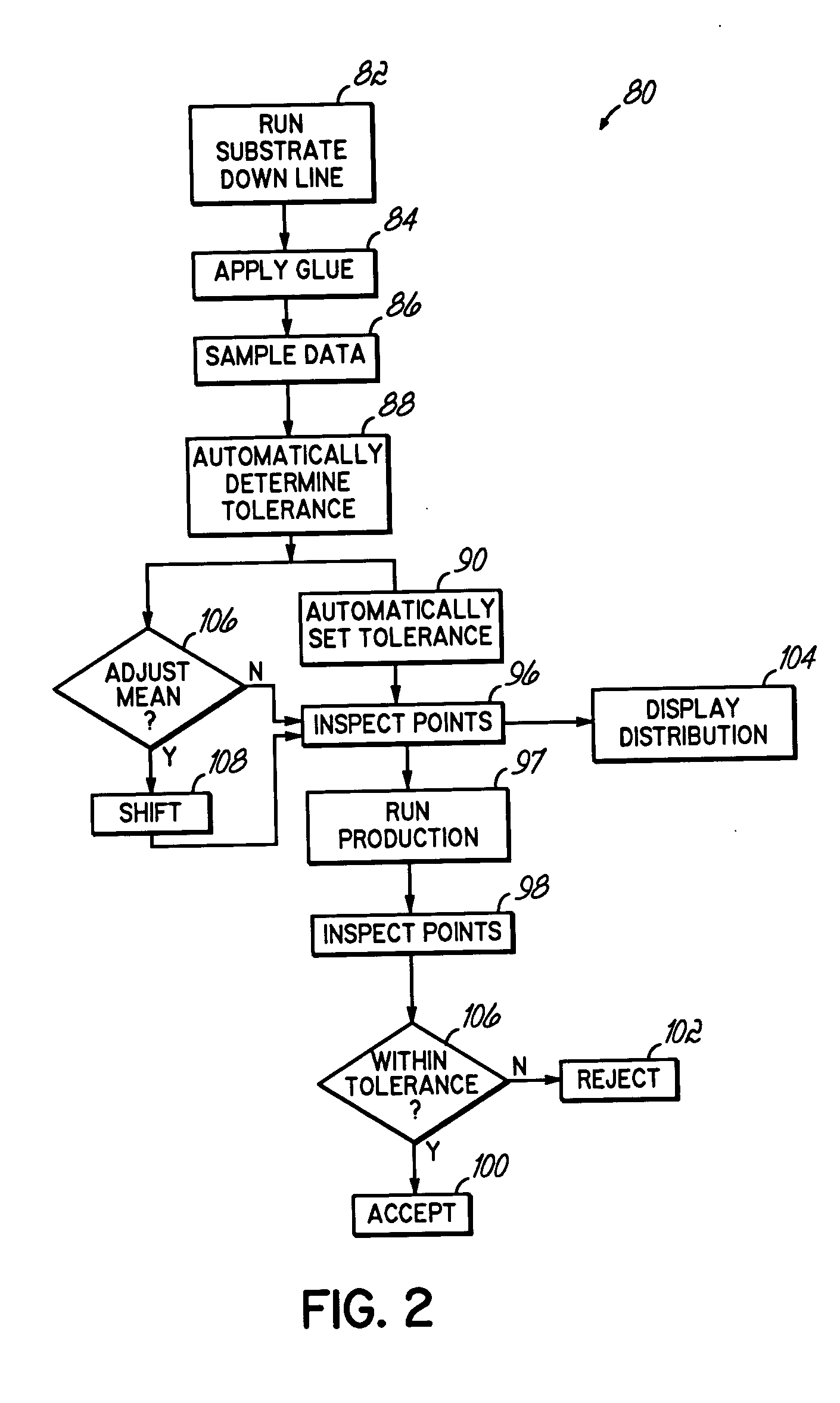Automatic tolerance determination system for material application inspection operation
a technology of tolerance determination and material application, applied in the direction of spraying apparatus, metallic material coating process, chemical vapor deposition coating, etc., can solve the problems of product waste and time, and achieve the effect of less substrate was
- Summary
- Abstract
- Description
- Claims
- Application Information
AI Technical Summary
Benefits of technology
Problems solved by technology
Method used
Image
Examples
Embodiment Construction
[0031] The various embodiments of the verification system of the present invention automatically determine and set a tolerance window to verify and monitor the accuracy of an adhesive application. The system typically analyzes statistical data to automatically determine respective tolerances at a number of inspection points. In one respect, the system may effectively “learn” a pattern from the data measurements and then compute respective reference locations, such as means, in addition to respective spreads, such as standard deviations, and ultimately, tolerances based on the learned pattern. The system then applies adhesive per application specifications and monitors the product result based on the new statistical tolerances. These tolerances are thus fed back in real time to track system hardware and adhesive pattern variances.
[0032] In one example, samples are gathered and a standard deviation or other spread is automatically computed. Other exemplary spreads may include an inte...
PUM
| Property | Measurement | Unit |
|---|---|---|
| length | aaaaa | aaaaa |
| width | aaaaa | aaaaa |
| height | aaaaa | aaaaa |
Abstract
Description
Claims
Application Information
 Login to View More
Login to View More - R&D
- Intellectual Property
- Life Sciences
- Materials
- Tech Scout
- Unparalleled Data Quality
- Higher Quality Content
- 60% Fewer Hallucinations
Browse by: Latest US Patents, China's latest patents, Technical Efficacy Thesaurus, Application Domain, Technology Topic, Popular Technical Reports.
© 2025 PatSnap. All rights reserved.Legal|Privacy policy|Modern Slavery Act Transparency Statement|Sitemap|About US| Contact US: help@patsnap.com



